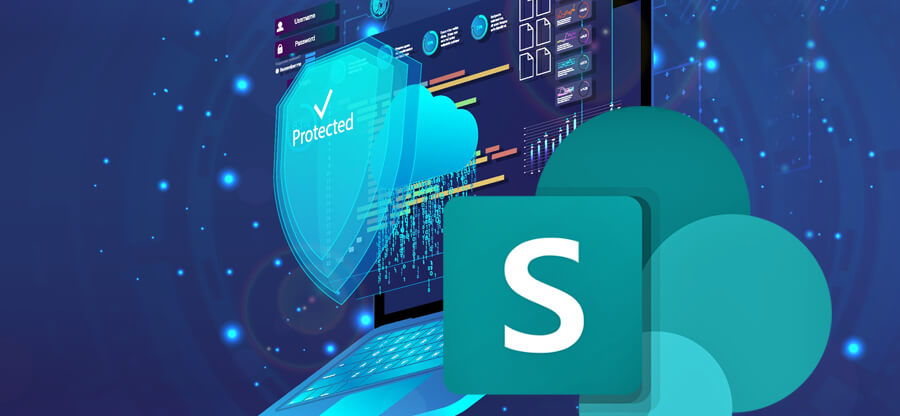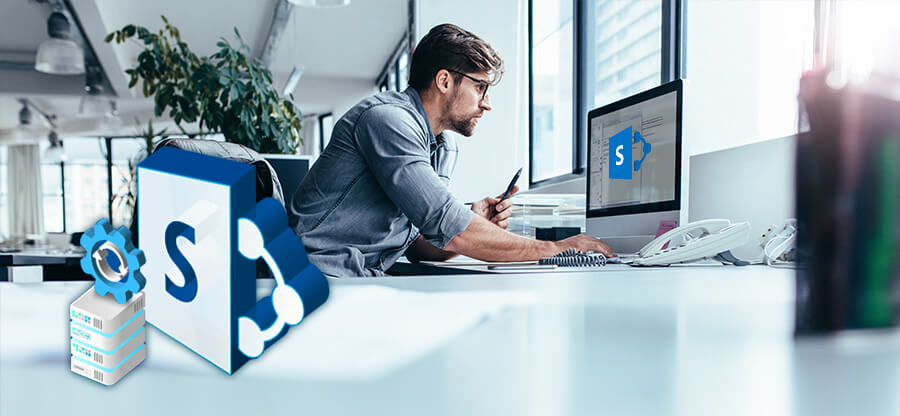Read time: 4 minutes
The role of regulatory compliance in cyber security is important. Organizations need to adhere to laws, regulations, and guidelines created by the government and regulatory bodies. These regulations apply to every organization, whether small or large; they also help them secure their business data. These authorities ensure that the organizations must follow these regulations properly. Some of the regulatory compliance obliged to the organizations are PCI DSS (Payment Card Industry Data Security Standard), FISMA (Federal Information Security Management Act), HIPAA (Health Insurance Portability and Accountability Act), CCPA (California Consumer Privacy Act), GDPR (EU’s General Data Protection Regulation).
New SharePoint features for compliance
SharePoint is an interactive web-based collaborative platform used by millions of users across the globe. To ensure safety, several compliance features are supported by SharePoint, such as data encryption, audit trail, two-factor authentication, etc. These regulations should be met to avoid future issues. Microsoft extended SharePoint’s capabilities by announcing several new compliance capabilities at Ignite 2019 conference. Some of the most important updates to the SharePoint compliance are listed below:
- Setting expiration periods for external access
This feature allows the organization to set a period for external access to SharePoint content. It simply means you can decide how long an external user can access the SharePoint data. For instance, if you set a 30-day expiration period, external users can access the content for only up to 30 days; after that, they will lose access. As the business requirement changes rapidly, you can extend or revoke the expiration period at any time as per your needs. - Restricting internal communication between certain user groups
This new feature set a barrier for restricting communication and document sharing between certain users. The major aim of this update is to improve the security mechanism of SharePoint. Information segments are created in the Microsoft 365 compliance center to enable this new feature. After that, the admin implements the policies to restrict their communication. - Automated detection and labeling of sensitive data
The organizations include confidential data that should be kept securely and managed efficiently. For doing this, Microsoft introduced this innovative feature to keep your private data safe. In this feature, the confidentiality of private data is achieved by assigning sensitivity labels to emails and documents. Note that the sensitivity level may vary to keep the confidential data safe. The reason behind the use of sensitivity labels in the feature is that it provides various security measures, such as controlling access to sensitive information, managing data encryption, etc.The new feature introduced in the SharePoint extends its functionality as follows:
Index Protected Content: In this new update, SharePoint can also index a labeled document with the metadata. In addition, it also improves the way of performing labeling into the specific content. This new update made it possible that a user can label sensitive information from SharePoint automatically.
Auto-classify with sensitivity labels: This new update is beneficial if a user forgets to label sensitive data in SharePoint. It includes an AI engine that helps to resolve this problem by spotting and labeling specific files. But note that you can use the automated labeling feature only if you have created a relevant policy in the Office 365 compliance center and implemented the rules for determining the sensitivity of the file via the AI engine.
Migrate to SharePoint to benefit from compliance features
While using SharePoint, you might need an innovative tool to perform certain things, such as backing up your SharePoint data, migrating data, etc. Kernel Migration for SharePoint can be the best fit for all your needs as it provides an all-in-one solution for SharePoint data migration. In addition, it enables a user to keep the backup of their SharePoint data. This innovative tool can add multiple SharePoint sites for migration in one go. Its important features are automatic migration, tenant to tenant Migration, Google Drive data migration, bulk migration, etc. To know more about the Kernel Migration for SharePoint tool, you can install it on your system.
Conclusion
As compliance requirements are growing rapidly, using the compliance features in SharePoint becomes necessary to avoid future problems. To make the SharePoint platform safer, Microsoft announced several new features that enhance compliance in SharePoint. You can refer to the above features, which make the security mechanism of SharePoint more efficient. In short, these compliances are responsible for making the platform more reliable and secure.







